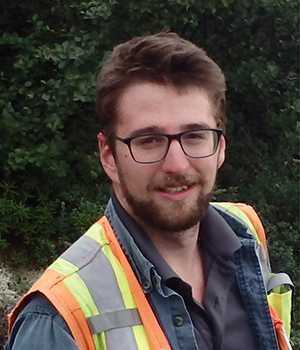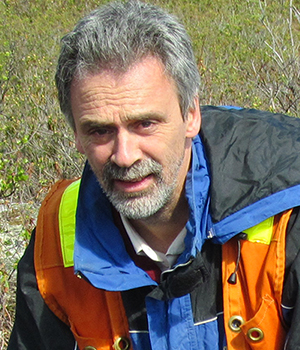The results of recent geological and geochemical surveys carried out by Géologie Québec and its university partners show that the James Bay region has very diverse geological and metallogenic contexts. The various presentations in this session will provide details on the shear zones that separate the Opatica and La Grande subprovinces and the La Grande from the Opinaca subprovince, these structures constitute substantial regional metallotects extending over hundreds of kilometres. Subsidiary deformation corridors are regularly observed in the Basse and Moyenne Eastmain and Lac des Montagnes belts. The results of the various works carried out in this sector show the presence of prospective zones with different types of mineralization: 1) VMS-type polymetallic mineralization; 2) exhalative sulphide mineralization in sedimentary rocks (Sedex); 3) gold mineralization associated with banded iron formations; 4) magmatic nickel-copper (± cobalt ± platinum group elements ± chromium) mineralization associated with mafic to ultramafic intrusions; 5) lithium-tantalum-caesium potential associated with white granitic pegmatites; 6) gold mineralization associated with deformation corridors.
The Boundaries of the La Grande, Opatica and Opinaca Subprovinces and the Diversified Mineral Potential of the Eeyou Istchee James Bay Region
Wednesday, November 22, 2023
Room 403 - Geoscientific Pavilion


9:05 a.m.
Laguiche and the Surrounding Area: Enticing in 1975 and Still Enticing in 2023, But Not for the Same Metals (U→Au→Li)

UQAM
Thanks to the MRNFQ’s sustained efforts since 1995, geological knowledge of the Laguiche has taken a giant leap forward. Even in 2023, the Laguiche and its surrounding area still raise important questions. With each successive wave of exploration, the mineral fertility of the Laguiche is being further confirmed. As a result, it is becoming increasingly important to take a closer look at the nature of this highly promising and “enticing” complex for Quebec, and particularly for the Eeyou Istchee James Bay region.
LCT pegmatites, the main targets of lithium exploration efforts in Quebec, are notoriously difficult to detect other than by direct observation of lithiniferous minerals (mainly spodumene) in outcrop or by drilling. These intrusions offer few contrasts with the host rocks from the point of view of response to geophysical methods, and are hardly associated with any distinctive alteration halo. Their emplacement does not appear to be dictated by the rock types or the host structures. As these pegmatites are composed of refractory minerals, they are unlikely to generate hydromorphic dispersion halos in the secondary environment. However, they are characterized by a particular mineral assemblage, meaning that erosion of these pegmatites is accompanied by the dispersion of these minerals in unconsolidated, glacial or alluvial sediments. A review of the signature of these dispersions in geochemical and heavy mineral surveys will be presented.
10:05 a.m.
Break
10:20 a.m.
Geology of the Lac de la Marée Region, Opatica and La Grande Subprovinces, Eeyou Istchee James Bay, Quebec, Canada

MRNF
Authors: Daniel Bandyayera and Emmanuel Caron-Côté (MRNF)
A new 1:50,000-scale geological map of the Lac de la Marée area (NTS sheets 32O09 and 32O16) was produced following a geological survey carried out in summer 2023, covering the area ~220 km north of Chibougamau. This work significantly alters the boundary between the La Grande and Opatica subprovinces, and confirms the eastward extension of the Lac des Montagnes Belt. The latter is now interpreted as part of the La Grande Subprovince, due to stratigraphic and metamorphic similarities with the Middle and Lower Eastmain Belts.
Prior to this work, the northern part of the study area was assigned to the Opinaca Subprovince. It was considered to consist mainly of migmatites derived from paragneiss. The results of the present survey reveal that this rock ensemble is instead the eastern extension of the Lac des Montagnes Belt (La Grande Subprovince), which rests stratigraphically on the tonalitic basement of the Hutte Complex. The Lac des Montagnes Belt is formed at its base by a sequence of amphibolitized volcanic rocks (Lac des Montagnes Group) and, at its top, by a locally migmatitized (Voirdye Formation) metasedimentary ensemble (cordierite-sillimanite-garnet wacke, arenite, quartzite, iron formation), cut by large injections of white pegmatite containing muscovite ± garnet (Senay Suite). Kilometre-long mafic-ultramafic intrusions (Nasacauso Mafic-Ultramafic Suite; peridotite, pyroxenite and gabbro) are observed at the base and within the volcanic and sedimentary sequences.
The southern part of the study area lies within the Opatica subprovince. It is bounded to the north by the Poste Albanel Shear Zone. It consists of intermediate to felsic plutono-gneissic rocks assigned to the Theodat Complex. A unit known as the Le Vilin Migmatitic Suite has also been recognized within the Théodat Complex. It consists of migmatites derived from the fusion of tonalitic gneiss.
Our work shows that the La Grande-Opatica contact constitutes an important regional metallotect, extending over hundreds of kilometers. Prospective zones for different types of mineralization have been identified: 1) VMS-type polymetallic mineralization associated with the Lac des Montagnes Group; 2) gold mineralization associated with banded iron formations; 3) Ni-Cu-PGE mineralization associated with the Nasacauso mafic-ultramafic intrusions; 4) lithium-tantalum-caesium potential associated with the white pegmatites of the Senay Suite; 5) orogenic-type gold mineralization associated with deformation zones.
10:40 a.m.
Geology of the Lac Cadet Region, Opinaca and La Grande Subprovinces, Eeyou Istchee James Bay, Quebec, Canada
Authors: Myriam Côté-Roberge and William Chartier-Montreuil (MRNF)
A survey carried out in the summer of 2022 produced a new 1:50,000-scale geological map of the Lac Cadet region (NTS sheets 33B06, 33B10 and 33B11), approximately 60 km east of the Éléonore mine. It corresponds to the continuation of the project begun in the Lac Conviac region in the summer of 2021. The aim of the mapping project was to define the boundary between the Opinaca and La Grande subprovinces, a major gold-bearing metallotect located in the area along a major NNE-SSW shear zone, the Prosper Shear Zone (CSpro).
North of the CSpro, the paragneiss and migmatite of the Laguiche Complex make up most of the Opinaca Subprovince in the study area. Intrusions of pegmatitic granite associated with the Janin Suite and the Gladman Suite run through it, particularly to the west. The quartz monzodiorite of the Cadet Pluton, a large, homogeneous and highly deformed new unit, cuts through the subprovince.
South of the CSpro, the Low and Prosper formations are transitional metasedimentary units between the rocks of the La Grande Subprovince and the paragneiss of the Laguiche Complex. The paragneiss is characterized by the local presence of aluminosilicates and by lower metamorphic facies than in the Leguiche. These sedimentary rocks are strongly injected by the felsic to intermediate plutonic rocks of the Uskawasis Pluton.
This entire sequence has been affected by at least four episodes of deformation, marked by the presence of numerous regional-scale folds, shear zones and brittle faults.
The difficulty in establishing the location of the CSpro raises numerous questions about its nature and undermines the definition of the boundaries of the Opinaca Subprovince throughout the James Bay area.
From a metallogenic point of view, the discovery in sheet 33B06 of a diorite closely associated with conglomerates of the Low Formation is reminiscent of the Lac Ell Intrusion and the context of the Roberto deposit. A large zone favourable to gold-bearing quartz veins associated with proximal hornblende-garnet alteration is emerging in the western part of the Opinaca Subprovince. Copper showings and S-type granitic pegmatites are also present in the study area.
11:00 a.m.
Metallogenic and Geochronological Synthesis of Eeyou Istchee James Bay

MRNF
Authors: Jérôme Lavoie (MRNF), Sylvain Trépanier (CONSOREM) and Jean Goutier (UQAT)
The aim of this CONSOREM project was to produce a metallogenic, geochronological, metamorphic and structural synthesis of a study area covering approximately 355,000 km2 located in the NE part of the Superior Geological Province. The area covers the whole or part of the volcano-plutonic La Grande Subprovince and the two metasedimentary subprovinces of Opinaca and Nemiscau. This vast territory of Eeyou Istchee James Bay still represents a new frontier for mineral exploration.
The large geochronological compilation resulting from this study includes 723 U-Pb ages (zircon, monazite, titanite and garnet). It allowed the identification of several magmatic or sedimentation episodes in the study area, namely three (3) Mesoarchean episodes (M1 to M3) and seven (7) Neoarchean episodes (N1 to N7). In addition, on the basis of inherited or detrital zircon and the crystallization ages of intrusions older than 2800 Ma, this work has made it possible to interpret and delineate hypothetical Archaean paleo-cratons. These observations suggest the existence, in this sector of the Superior Province, of an ancient Paleoarchean basement that evolved into a Paleoarchean-Mesoarchean basement formed of several small cratons on which the Mesoarchean to Neoarchean supracrustal sequences developed.
The study also defined at least seven (7) distinct metallogenic periods that define several overlapping metallogenic provinces. Each province is characterized by distinct metal contents, specific metal signatures and a variety of deposit types. The synthesis highlights the influence of mineralization interpreted as premetamorphic and syngenetic in the formation of several deposits in the study area. In addition, despite the importance of mineralization interpreted as epigenetic, the synthesis shows that several deposits and showings are of magmatic-hydrothermal origin. As a result, many intrusions associated with the metallogenic periods defined in this project are largely underexplored, with a high potential for mineralization in many substances, including several critical and strategic minerals.
The many contributions of this project are leading to a better understanding of the metallogeny and geochronology of the Eeyou Istchee James Bay territory. This new knowledge of the spatiotemporal distribution of the main precious and base metal deposits in the area enhances the potential for new discoveries by: 1) defining new metallotects; 2) developing new exploration strategies; and 3) targeting historically neglected sectors or sectors already explored, but with a new vision.
During the summers of 2021 and 2022, the Ministère des Ressources naturelles et des Forêts carried out 4 geochemical surveys of high-density lake-bottom sediments (1.5 samples/km2) in the Eeyou Istchee-James Bay region. These surveys cover an area of around 11,700 km2 and have resulted in the collection of 8,403 lake-bottom sediment samples. These projects follow on from a survey carried out in the Eeyou Istchee James Bay region (Solgadi, 2022) to provide high-density geochemical data. This work should make it possible to identify more precisely the prospective zones favourable to the presence of mineralization than was possible with the previous lower-resolution surveys covering this sector (sampling density of one sample per 6 km2) carried out by the Société de développement de la Baie-James in the 1970s. Analyses should also be more reliable, particularly for gold. The presentation will provide an overview of the surveys carried out, their processing and the elemental anomalies they revealed (Ag, Cu, Li, Mo, Ni, PGE, REE, W).
The data and reports associated with 2 of these 4 surveys will be unveiled as part of Québec Mines 2023.
11:40 a.m.
A New Approach to Geophysical Lineament Extraction by Bayesian Optimization: Wavelet Principal Component Analysis and Hysteresis Thresholding

UQAT
Authors: Bahman Abbassi and Li Zhen Cheng (UQAT)
This study presents new automated geological mapping techniques based on the detailed extraction of geological contacts and lineaments. Two main approaches are put forward. The first combines independent component analysis (ICA) with k-means cluster analysis to process colorimetric data, providing solutions to geological overlay problems. The second approach integrates wavelet transform and Bayesian optimization for fault detection. Based on the principal components derived from the wavelet transform, this strategy enables image analysis to be refined. Lineament detection is enhanced by examining the slope and orientation of the wavelets, focusing on fault characterization. With the help of principal component analysis (PCA), this method makes it possible to distinguish the key components of the wavelet transform, ensuring optimal detection. A new algorithm based on Bayesian hyperparameter optimization (OBH) is also presented, exploiting a range of images to improve anomaly extraction. Tested on images from Quebec, this method has demonstrated its ability to accurately model lineaments. These advances, which are more effective than traditional methods, add to our understanding of geological structures.

